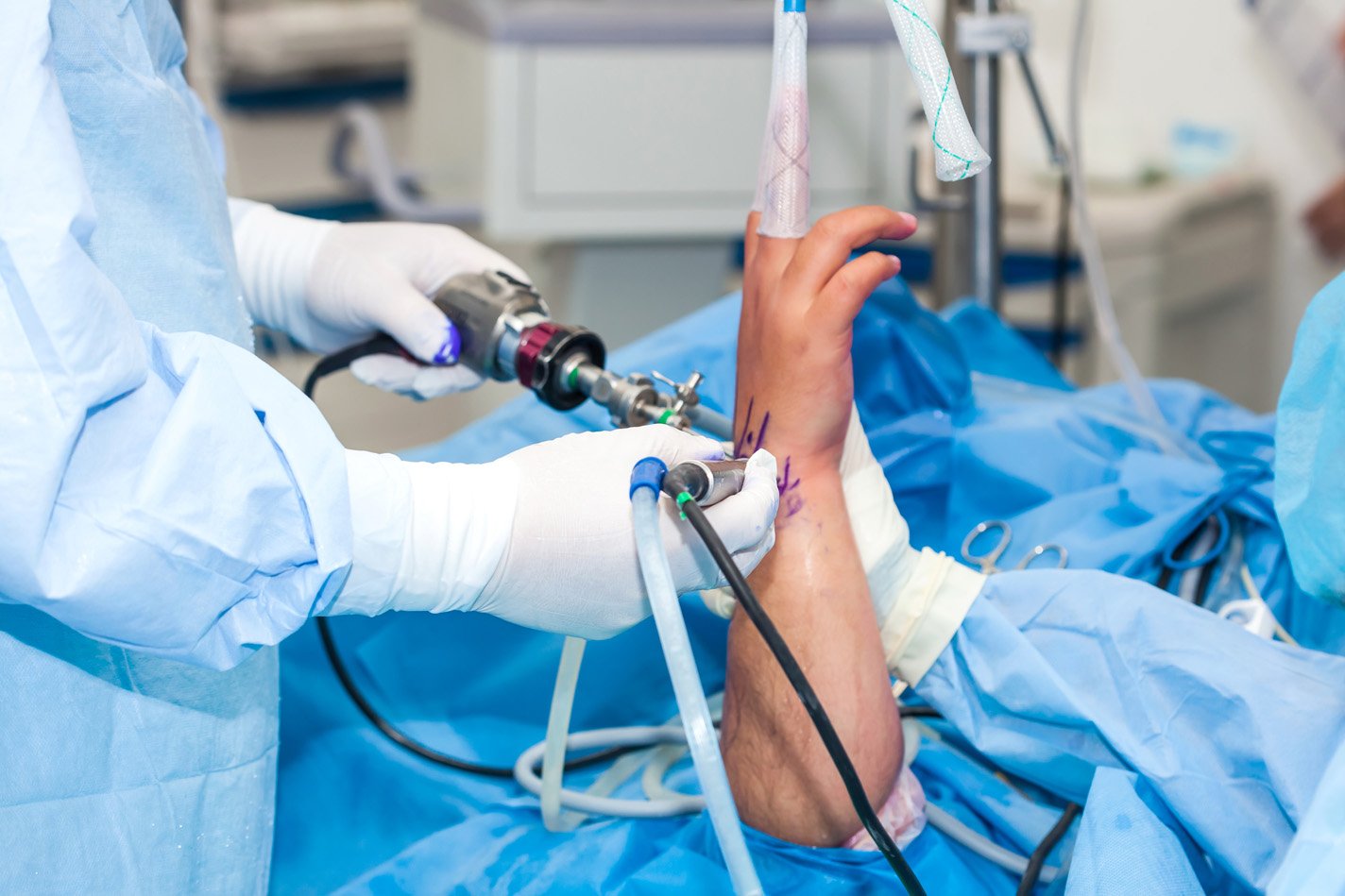What is hand and wrist surgery?
Surgery is a very broad category of medical treatment, but generally refers to treatments or procedures that require an incision (cut) on the skin. The skin incision allows the surgeon to then repair whatever deep structures (bones, tendons, ligaments, nerves) may be injured or diseased. Surgical procedures typically also typically require some time of anesthesia.
What different types of surgery do you offer?
We offer highly specialized state-of-the-art surgical techniques for injuries and conditions that affect the hand and wrist. Learn more by visiting the Conditions and Treatments section on our website.

- Out-patient Surgery
- In-patient Surgery
- In-office Procedures (WALANT Surgery)
- Minimally Invasive Surgery
- Opioid-Sparing Surgery
- Wrist Arthroscopy
What different types of anesthesia are used for hand and wrist surgery?
There are many anesthesia options to keep you comfortable during hand and wrist surgery, and your surgeon will help to recommend the best option for you.
Local anesthesia:
Many minor hand and wrist surgeries like trigger finger release can be safely and comfortably performed with just local numbing medication like you might get during a dental procedure. If the procedure is performed in an operating room, mild IV sedation may be offered to reduce awareness and anxiety during the procedure, and also minimizes the mild pain from the numbing shots. Local numbing usually lasts 2-12 hours.
Regional anesthesia:
For larger hand and wrist surgeries like wrist fracture repairs, we usually recommend a regional block, which is a numbing shot that numbs the entire arm, and often lasts longer, sometimes 6-24 hours.
General anesthesia:
Typically, only major hand and wrist surgeries require general anesthesia. This technique involves deep IV sedation to the point that a breathing tube is required during the procedure.
In-office WALANT Surgery (Wide Awake Local Anesthesia No Tourniquet):
This is an anesthesia technique developed by hand surgeons in which minor surgeries and even some larger surgeries can be performed in the office procedure room without the need for an arm tourniquet or sedation. A medication called epinephrine is added to the local numbing to reduce bleeding. Because a tourniquet is not needed, IV sedation is not required (tourniquets can be very uncomfortable without IV sedation). Because IV sedation is not required, some procedures can be performed in the office procedure room without needing a full operating room and anesthesia team. It is important to understand that with WALANT surgery you are fully awake during the procedure, and while your surgeon will ensure that you are adequately numbed up, you may continue to feel pressure. Some patients choose to watch their surgery, while others simply look the other way.
Why should I choose Hand Institute of Charleston for my surgery?
Our Board-Certified Fellowship-Trained Orthopedic Hand and Wrist Surgeons, offer both highly skilled and highly compassionate care with years of experience. They have assembled a world-class team of hand health professionals right here in the Lowcountry. We offer the ONLY dedicated Hand and Wrist Institute in the Charleston area, and our specialized approach offers the highest possible quality of care for all of your hand and wrist problems. Your hands are important, why settle for anything less!
Ready to confirm a diagnosis and fix the problem or just want to learn more?
Our board-certified orthopedic hand and wrist surgeons Eric Angermeier, MD and Kyle Kokko, MD, PhD, are here to help! They can often diagnose the problem in one visit, and get you started with a treatment plan. We offer a wide variety of both nonoperative and operative treatment options.
Call today for a clinic or telehealth appointment! 854-429-4263